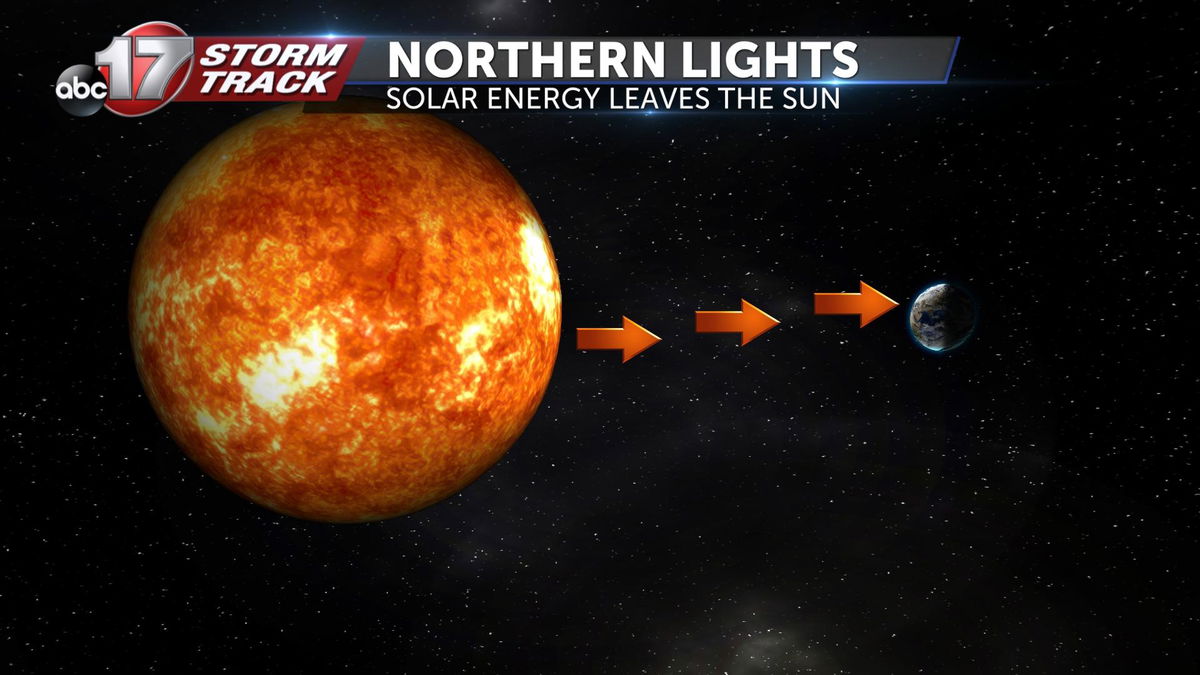Insider Blog: What are the northern lights and why are they seldom seen locally
Many of us are familiar with the northern lights, the green glow in the night sky that we typically don't see around here. The scientific name for this phenomena is the aurora borealis.

When solar energy reaches earth's magnetic field, it is channeled to the poles. When this energy collides with gasses in our atmosphere, the gases heat up, causing the colorful phenomena.

This is why auroras are typically seen near the magnetic north and south poles.

The display of lights in the night sky can be attributed to the earth's atmosphere interacting with energy from the sun. However, the lights can grow stronger and be seen farther from the poles if the sun's energy is stronger.
Last night, a potent type of solar flare, called a coronal mass ejection bombarded the earth's magnetic field. The stronger output of solar energy triggered a warning from the Space Weather Prediction Center The warning stated that some electronics near the poles may see interference, and that the Aurora Borealis could possibly be seen from New York to Washington State.

This warning was for a level 2 Geomagnetic storm, one that wouldn't be visible to those here locally, but primarily those along and north of 55 degrees north magnetic lattitude.

For parts of central Missouri to have a chance at viewing the aurora the storm would have to be at least a level 3.
If you or anyone you know has photos of the northern lights present or past, share them with us under the share tab here on our website.
